
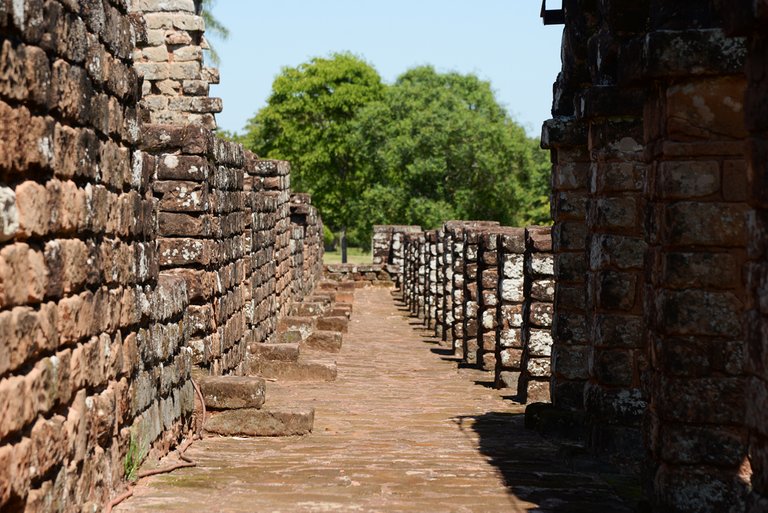
THE SUCCES OF THE JESUITS
The Jesuits did come to South America to do missionary work first and foremost. They did that with great success, building 30 missions. They did not enslave the Guarani population. Instead they tought them skills, established schools and tought them agriculture. They were self-sufficient in many ways. The Jesuit missons might have saved the Guarani population on a whole. Otherwise they would probably have suffered due to the slave trade. Living in one of these “reducciones” gave the Guaranis a good life.
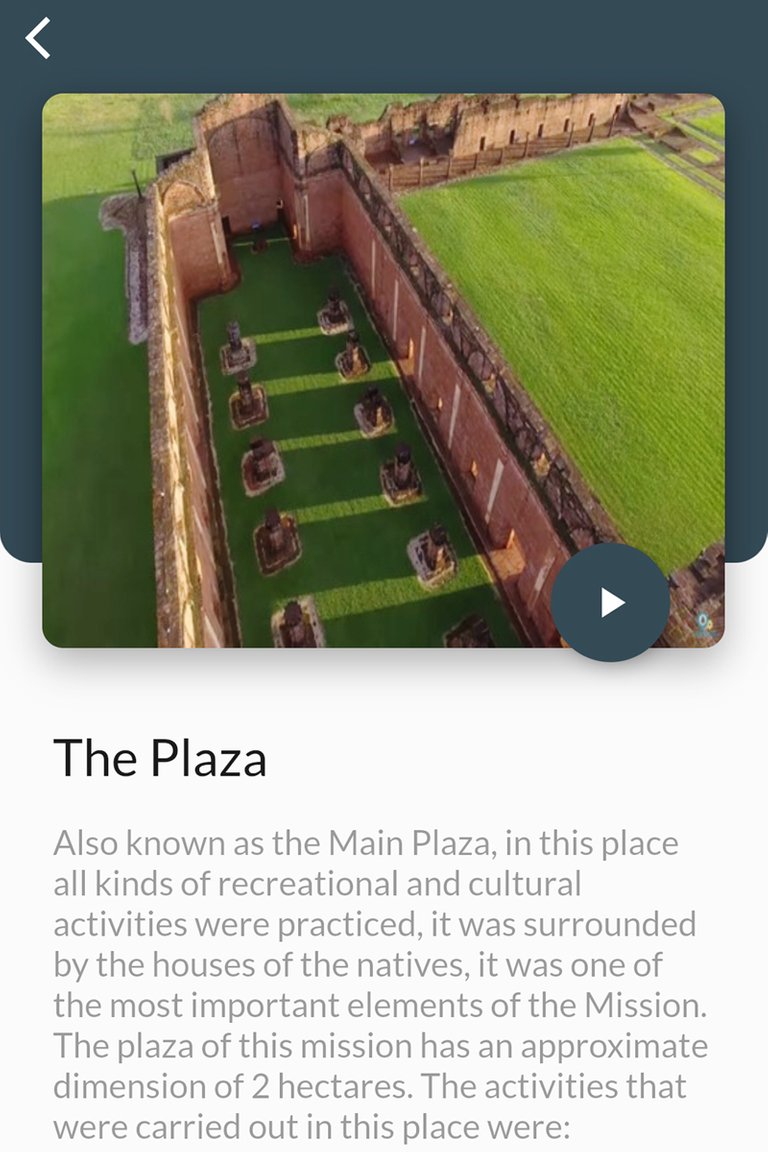 The “guide” as it looked on my phone (screenshot)
The “guide” as it looked on my phone (screenshot)JESÚS DE TAVARANGUE
The ruins of Jesus de Tarvaranque are just as impressive as the ruins of Trinidad. In this post I have chosen to focus mostly on the church, and the buildings that lie directly next to it. Many of the others are not in such good condition. Also, this mission is built on the same principle as the previous one: A large plaza, workshops, Guarani houses, church etc. Just like in Trinidad, I had to download an app and scan the QR codes to listen to an English speaking guide. I got the same information written, so I took screenshots to be able to have the information for later.
This mission was founded in 1685, shortly after Trinidad. It has not allways been locacted at the current location. It has migrated several times before it ended up here in 1758. For that reason it has also been called “the Pilgrim Town”.
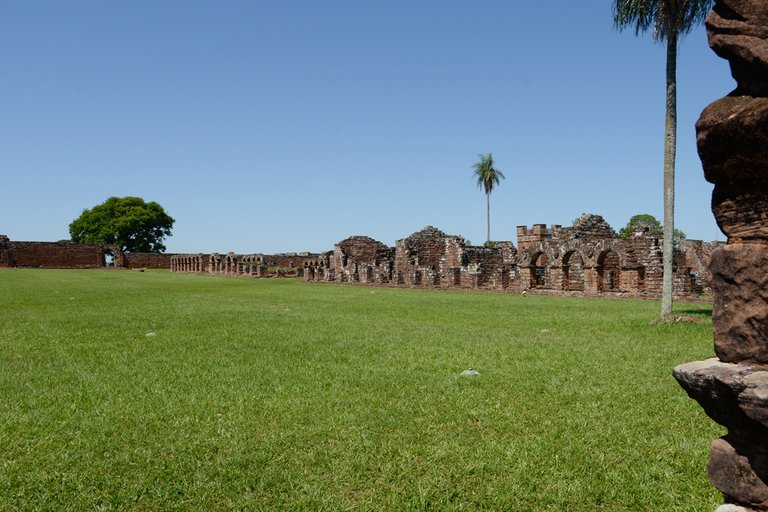
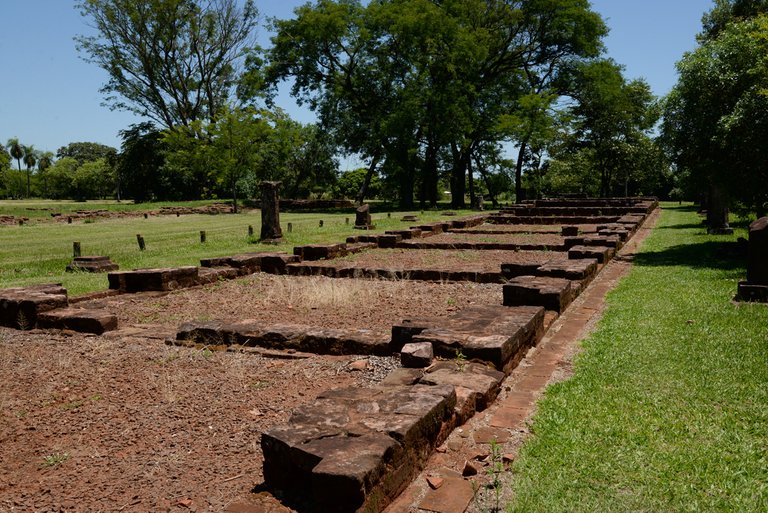 The homes of the Guaraní families
The homes of the Guaraní familiesWe start our tour at the Plaza. Just like the other Jesuit missions, the plaza was used for ceremonies like weddeings, parades, fairs etc. There isn't much left of the houses. Only the bases. Each of the families who had a house, also had their own garden.

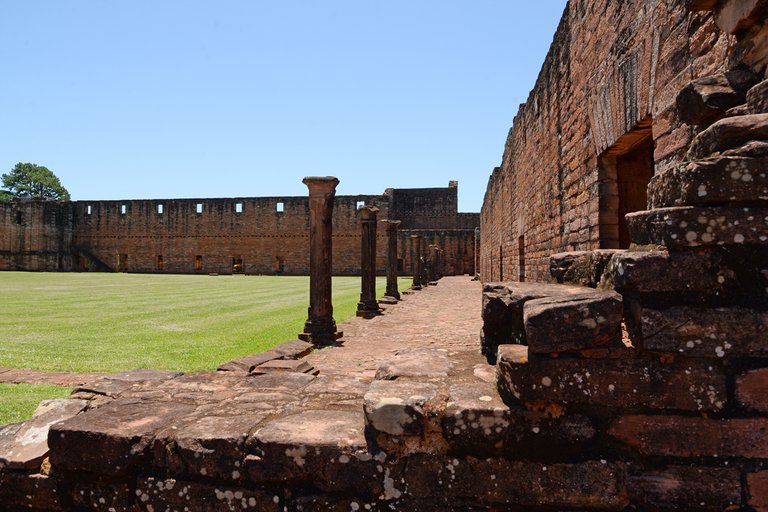
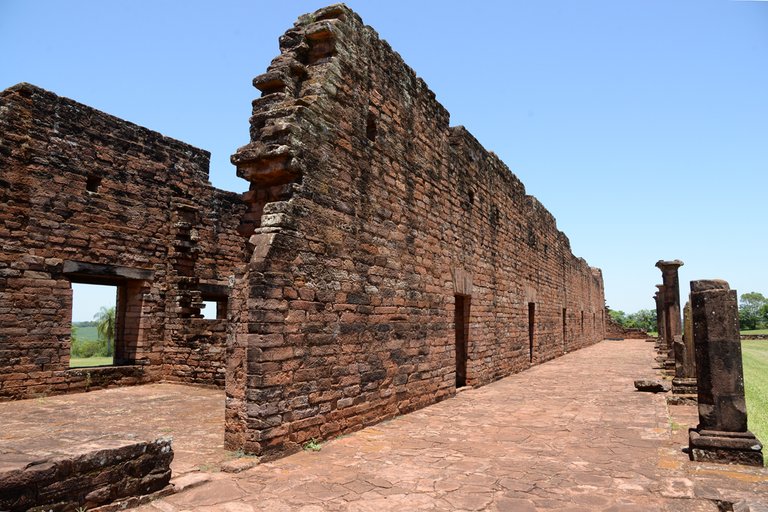
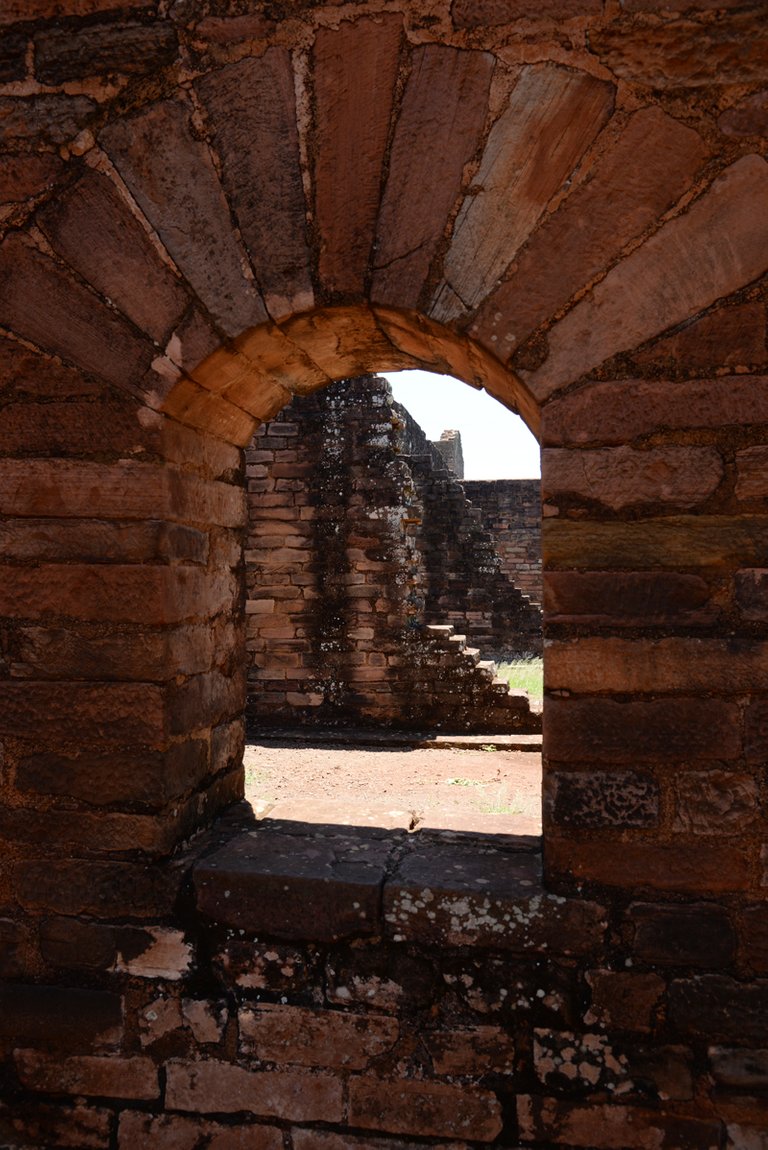
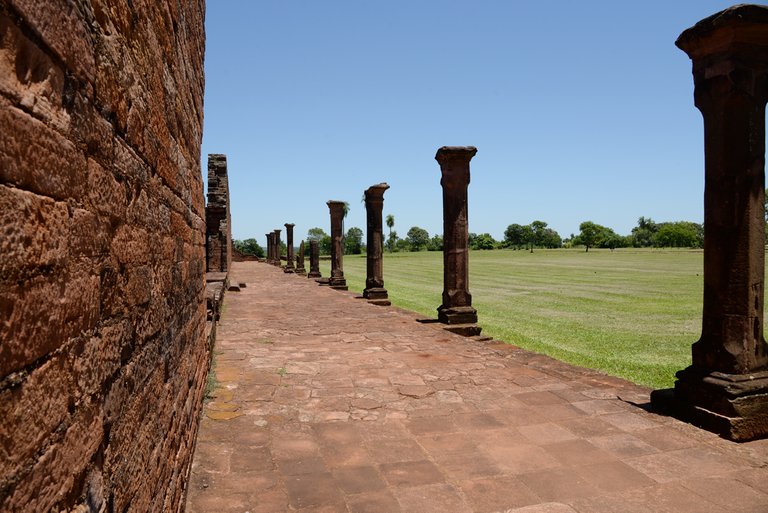
We then mooved on to the workshops and the school. The school which is adjacent to the priest's residence had 6 classrooms and cloister with a wall around it. In the priest's residence there is used to be a cistern, connected to drainage channels that lead to the garden for irrigation. From here we continued to the main church. The largest structure in the whole place.
 This is the High Alter. There are two pilasters here with inscriptions of San Francisco de Asis and Santo Domingo de Guzmán.
This is the High Alter. There are two pilasters here with inscriptions of San Francisco de Asis and Santo Domingo de Guzmán.
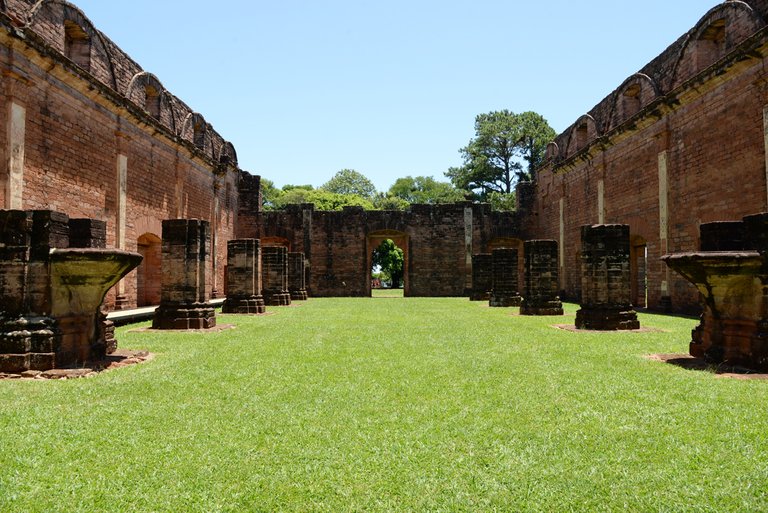
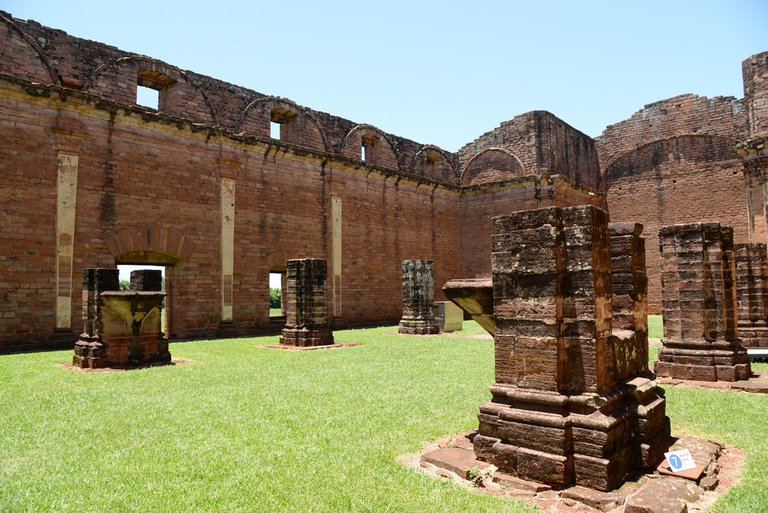
The church has two pulpits confronted. They did so, because then they could have debates here. The two debaters would then be opposite each other. What did the debate about? Might have been about what is good and what is evil. When they held mases it was usually in Latin, but they did translate into Guarani.
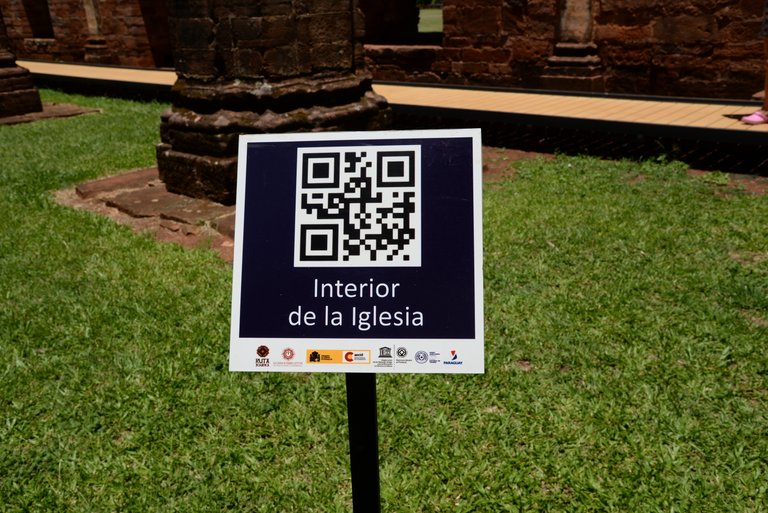
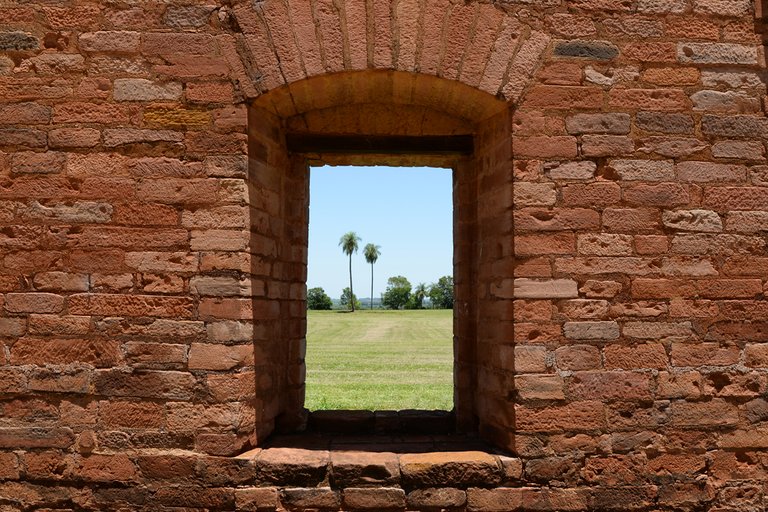
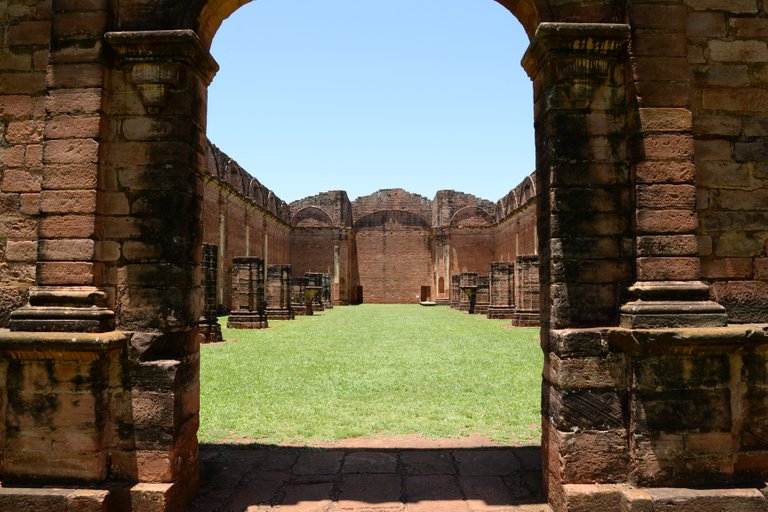
Inside there are two rows of pillars in the shape of a Greek cross. They divide the building into three naves and were probably also in use for supporting the roof. The size of the church is 70x24 meters and just as impressive in size as the church in Trinidad. To the east side of it, the indigenous cemetery is located, which was divided into sections for women, men, girls and boys.
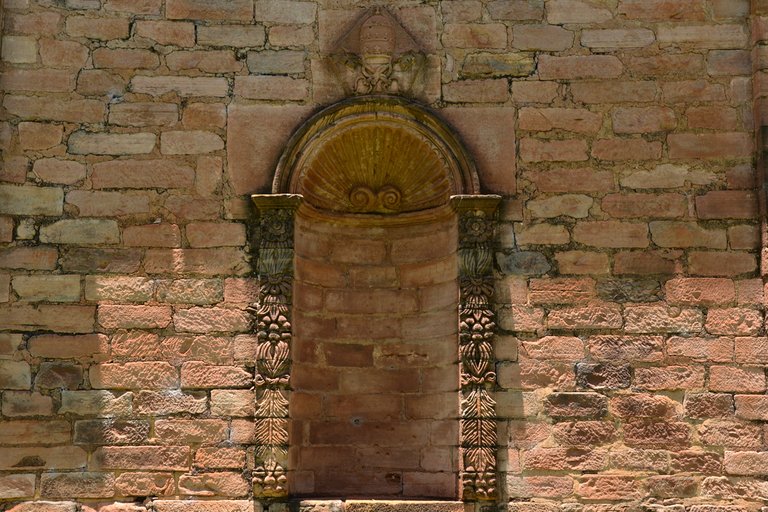
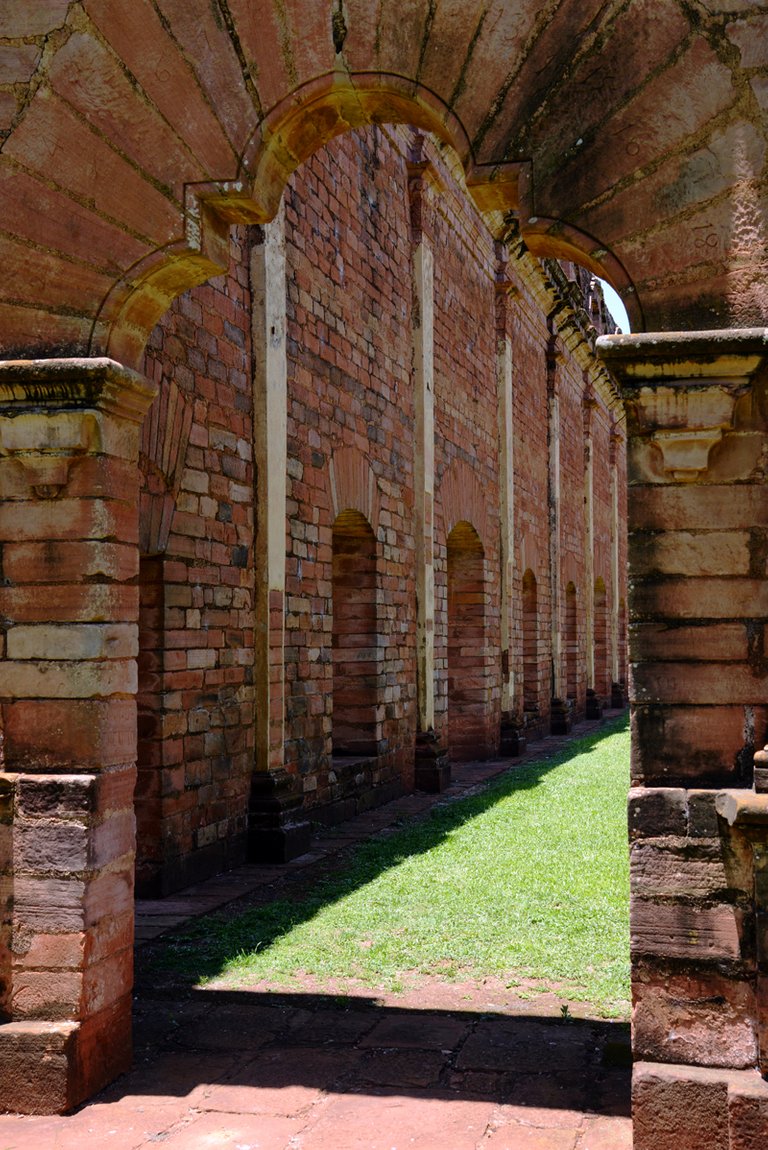
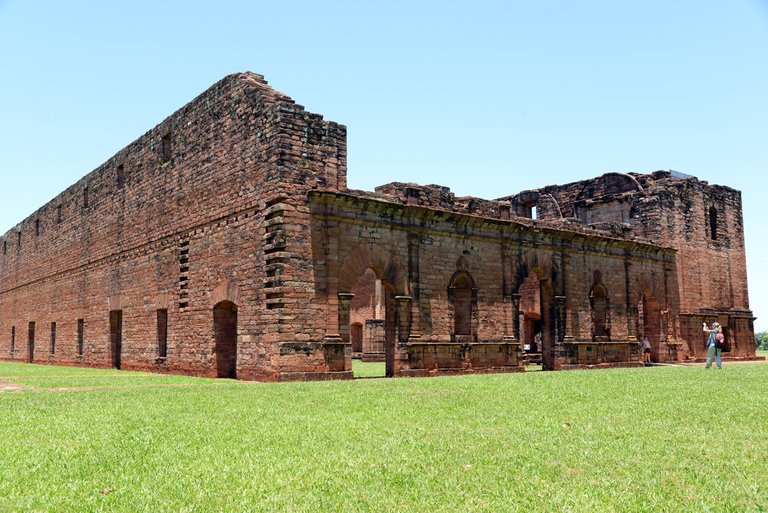
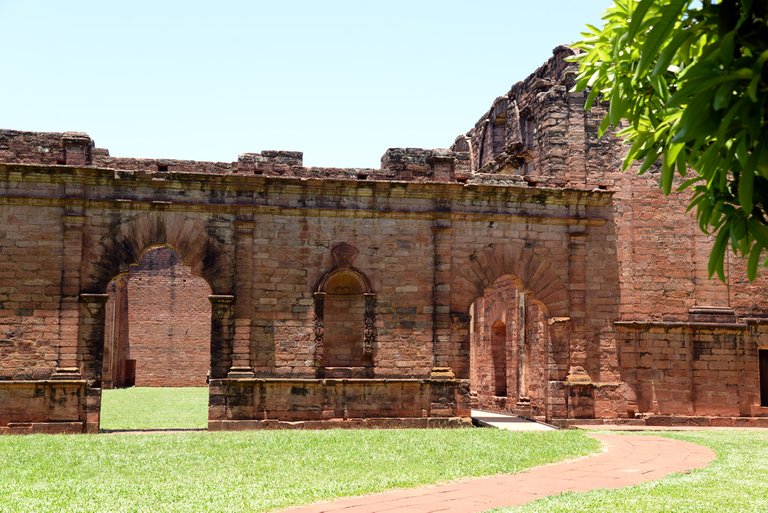
The church has three entrances through arches in the Moorish style. This because the architects came from Spain. On both sides of the main entrance there are two niches that contains insignia with the papal tiara and the keys of St. Peter representing the Catholic Church. The tiara with the sword represents the Spanish Crown. The two powers that governed the Jesuits.
THE MISSONS CAME TO AN END
This happened when the Spanish King forced the Jesuits to leave all of their territories. The missions were abandoned and the buildings left to decay. The fact that the Jesuits were so successful may have been one of the reasons why they were expelled from both Spanish and Portuguese areas. These settlements were unable to preserve their independence without the Jesuit priests, but they have managed to keep much of their traditions.
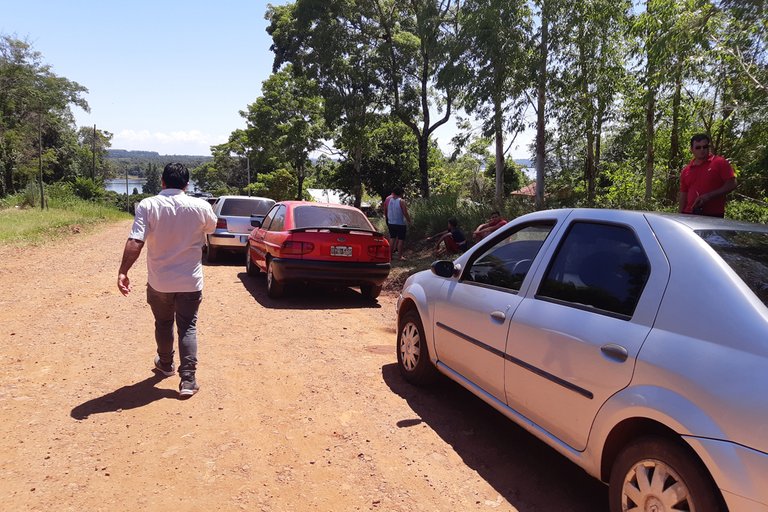
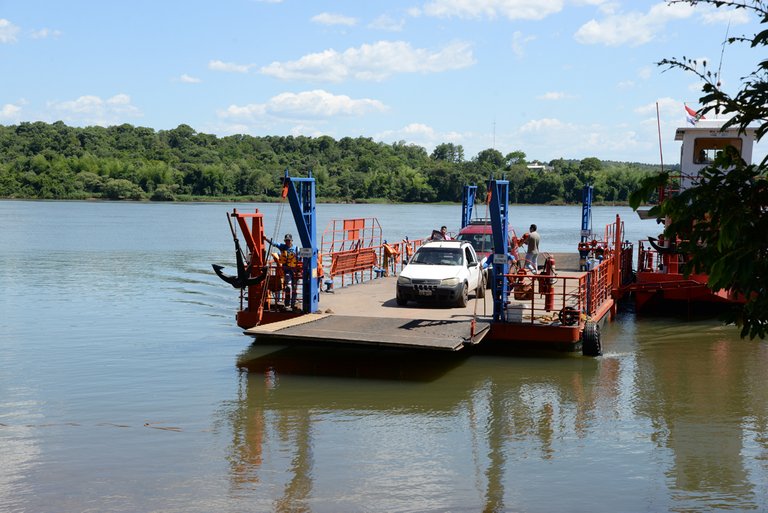
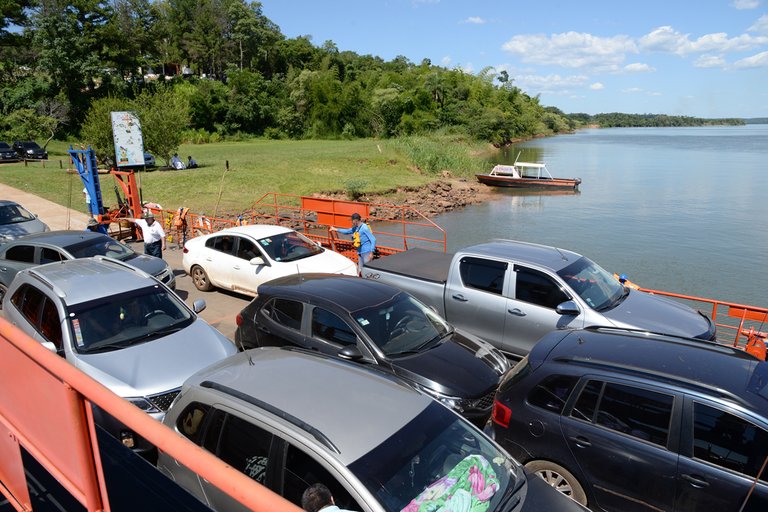
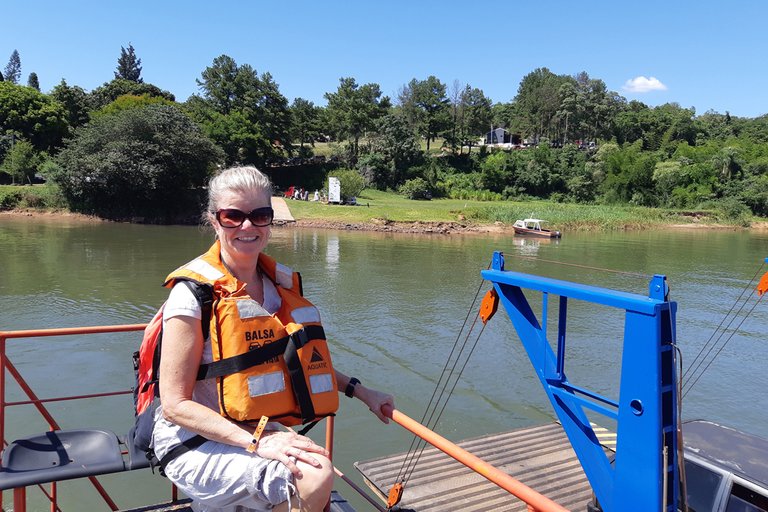 My sister
My sister
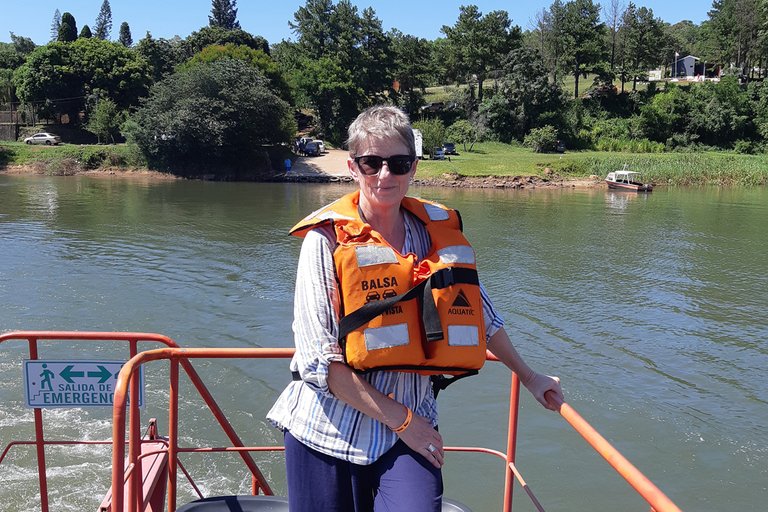 My sister took this photo of me
My sister took this photo of meThen it was time to get back to San Ignacio. The driver's plan was to take the ferry across the Paraná River on the return trip, instead of driving via Posadas. When we arrived at the ferry berth, it turned out that there was a kilometer long queue of cars. The driver contacted his company and arranged it so that we could walk down to the ferry, cross the river and then another driver would meet us on the other side. After being handed a life jacket and sitting down for only 10 minutes or so, we were back in Argentina. It had been a very hot day, so a cold beer at our small hotel Toscana was incredibly good.
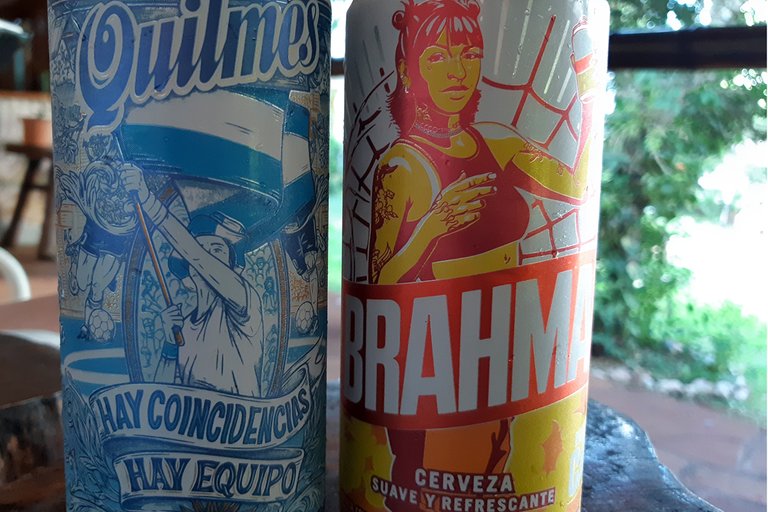
To spent a whole day, crossing borders, to see these architectural gems built by Spanish missionaries, was a day well spent. There are Jesuit ruins in San Ignacio, and a couple of others close by. But the ruins in Paraguay are more intact. When we learned about that, we chose this daytrip in stead. I can only recommend doing that.
Source:
Information from the «guided» tour and the small museum.
The post about
https://hive.blog/hive-117778/@digi-me/an-amazing-legacy-of-jesuit
Please do follow if you want to keep up with my next travel story. Any upvotes or reblogs are hugely appreciated!
Latest travel story, check out:
An amazing legacy of Jesuit missionaries in Paraguay (29 photos)
U.J
Kristiansand, Norway
All the photoes are mine, Ulla Jensen (flickr, Instagram and facebook)
[//]:# (!pinmapple -27.05593 lat -55.74110 long An amazing legacy of Jesuit missionaries in Paraguay (part 2 - 26 photos) d3scr)Follow us for our street art contest and blogs about travel, art, photo, crypto & gaming

What an amazing place. It looks pretty especially at the top view.
It is a fascinating place🙂
Hiya, @choogirl here, just swinging by to let you know that this post made it into our Top 3 in Daily Travel Digest #1957.
Your post has been manually curated by the @pinmapple team. If you like what we're doing, please drop by to check out all the rest of today's great posts and consider supporting other authors like yourself and us so we can keep the project going!
Become part of our travel community:
Thank you so much @choogirl🙂
Amazing place 👏🏾👏🏾👏🏾, very beautiful 👏🏾👏🏾👏🏾
🙂👍
Wow! I so love this historical place. What a superb legacy of Jesuit missionaries in Paraguay. 1685 was many many long years ago and I am really amazed how strong the foundation of the missionary is. Honestly, I have never been to a place like this. Have safe travels and keep safe always my dear friend.
Thank you :) the history of the Jesuits is amazing. I did't know about this part of South- American history until a few month before leaving Europe.
Congratulations. ancient That's very beautiful.
Thank you :)
Congratulations, your post has been added to Pinmapple! 🎉🥳🍍
Did you know you have your own profile map?
And every post has their own map too!
Want to have your post on the map too?